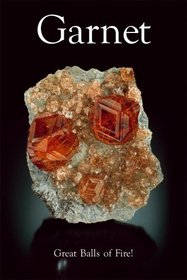Search -
Garnet; Great Balls of Fire
Garnet Great Balls of Fire
Author:
Populations in both eastern and western cultures have been mining, trading, and carving garnets for millennia. Named for its likeness to the flesh and seeds of the pomegranate (Latin granatus), garnet is most commonly thought of as a red gemstone, but it actually occurs in all colors of the spectrum. In fact, garnet is a complex group of fifteen... more »
Author:
Populations in both eastern and western cultures have been mining, trading, and carving garnets for millennia. Named for its likeness to the flesh and seeds of the pomegranate (Latin granatus), garnet is most commonly thought of as a red gemstone, but it actually occurs in all colors of the spectrum. In fact, garnet is a complex group of fifteen... more »
ISBN-13: 9780979099847
ISBN-10: 0979099846
Publication Date: 10/17/2008
Pages: 104
Rating: ?
ISBN-10: 0979099846
Publication Date: 10/17/2008
Pages: 104
Rating: ?
0 stars, based on 0 rating
Publisher: Lithographie, LLC
Book Type: Perfect Paperback
Members Wishing: 0
Reviews: Amazon | Write a Review
Book Type: Perfect Paperback
Members Wishing: 0
Reviews: Amazon | Write a Review




